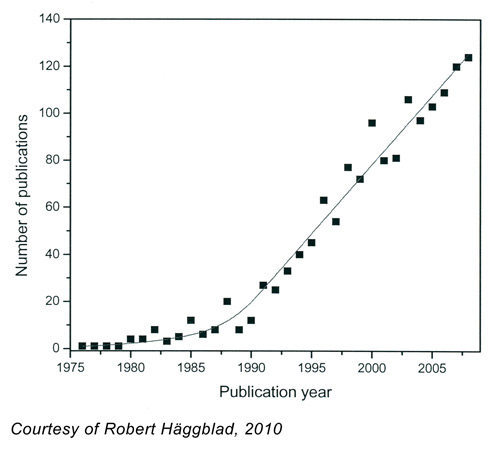|
Welcome
Greetings and welcome to this the first monthly newsletter of news and trends in the renewable chemicals and fuels world. In this, we will give you our observations and opinions on topics in this area, all with a Scandinavian touch. This does not mean that we focus on any particular region, but proximity to this market has its influences as well as our own personal opinions. In each edition we will also have a question and answer section with representatives from the industry, academia and public. In this section Dr Børre Tore Børresen of Statoil gives us his answer to the question What do you percieve to be the major obstacle to commercializing non-fossil based fuels? We will also from time to time include something from trends of the exiting world of catalysis. If you’re not into this field (and you better have a good reason…) we hope you’ll still find this interesting from a general knowledge perspective.
In this first edition, we have focused on a trend identified within the biodiesel industry and the increased patent activity in the field of heterogeneous catalysts for the conversion of oils to biodiesel. In the CatScan section, we have a brief introduction to the new use of in-situ analysis methods in catalysis.
You have received this first edition of this newsletter because we in the team behind it think that you will benefit from reading our humble observations and opinions on this subject.
Please feel free to forward it to anyone else you think may benefit from reading it or if we are mistaken, please feel free to unsubscribe (see below right).
/ Christian Hulteberg
The Answer
What do you percieve to be the major obstacle to commercializing non-fossil based fuels?
given by Dr Børre Tore Børressen, at R&D Manager, Renewables, Statoil
The major obstacle with respect to commercialization of non-fossil based liquid fuels is the access to sufficient amounts of sustainable feedstock being both relatively homogeneous in composition and properties and to a low/acceptable cost.
Heterogenous catalyst in biodiesel production
After reviewing the current patent literature, it is obvious that the patent activity has increased markedly for heterogeneous catalysts in the biodiesel application. Since december last year, 11 patents have become public.
This is an indication of a couple of things; first of all that several research groups and companies think that there is a commercially viable pathway from triglycerides to biodiesel using these kinds of materials. Secondly, the cost of the homogeneous catalyst and the need for downstream neutralization is large enough to motivate larger reaction vessels. Thirdly, the premium of the improved quality of glycerine is, together with other factors, beneficial enough to strive for. The question is when, aside from Axens Esterfip plants, we will see other producers operating heterogeneously catalyzed biodiesel plants? And will we begin to see conversions of homogenously catalyzed plants to heterogeneously catalyzed plants?
|


